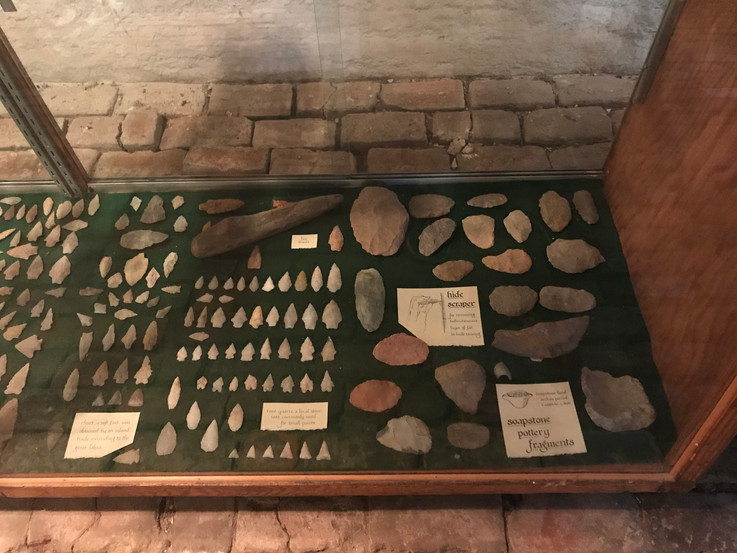Smith's Fort Plantation is a small historic attraction in Surry, Virginia that was the site of an English fortification dated 1609 and present location of a Georgian-style colonial home. In 1608, Captain John Smith of the Jamestown Colony decided to build a retreat fort further inland to protect English colonists from Indian or Spanish attacks on their settlement. Construction of the fort continued until mid-1609, but was never completed. It was abandoned early due to food shortages and rat infestation in the original colony and the onset of the First Anglo-Powhatan War. This marked the beginning of the Starving Time, which spanned the winter of 1609-10 and resulted in the deaths of three-quarters of the colonists. Today, only the ramparts of the "New Fort" remain. And even though they might not be much to see, they are the oldest surviving English structures in Virginia.

In 1614, the land was gifted to John Rolfe by Powhatan as part of a dowry in Rolfe's marriage to Pocahontas. While Rolfe and Pocahontas never settled on the land, their son Thomas did. Thomas Rolfe established a small tobacco plantation on the property. As the colony began to develop, large tracts of land were parceled into smaller ones. Rolfe sold this particular portion of land to Thomas Warren in 1640. Other portions of land near the James River were sold to various families and eventually a small town known as Cobham was incorporated. Cobham was a commerce town that was active during the 17th and 18th centuries. During the Revolutionary War, the town was burned by British troops who believed that Patriot-sympathizers lived there. The town never recovered and all indications of the town are long gone.
By time the mid-18th Century came around, the plantation was owned by Jacob Faulcon who was the Surry County clerk from 1781-1801. He built the surviving colonial home on the property between 1751-65. The Faulcons were part of the expanding middle class during that time. The house today is decorated period furnishings and restored to what it would have looked like 250 years ago. The restoration work was completed in the 1930s by members of the Association for the Preservation of Virginia Antiquities (APVA) and John D. Rockefeller. Fortunately for restorers, families had lived in the house continuously from the mid-1700s to the 1920s. This left the interior of the house in great shape. In fact, most of the woodwork, flooring, and doors are original to the house. For the outbuildings, however, that's a different story. All of the outbuildings were essentially in ruins eighty years ago and none of them survive today.

I found a very interesting article published in 1935 by the Virginia Magazine of History and Biography about Smith's Fort Plantation (then-called the Rolfe Property and Warren House). This article goes into great detail about the history of the families associated with this property and the restoration efforts undertaken by the APVA. This was found on JSTOR (a historic database) and I'll include the links to the PDF and online versions in this article, however I don't know if the links will work for folks who do not have JSTOR access. Click here for the PDF and here for the online article. Test them out...hopefully they will work!
Smith's Fort Plantation is small, but historically-significant location, spanning over 300 years of our nation's history. The tour of the house and exploration of the grounds takes no more than an hour. If you visit this site, be sure to visit Bacon's Castle which is right down the road! Both of these locations are operated by Preservation Virginia, a private, non-profit historical organization dedicated to the preservation, maintenance, and protection of Virginia's historic sites. And if you're looking for more Virginia history, the Jamestown Colony is just a ferry ride away!













